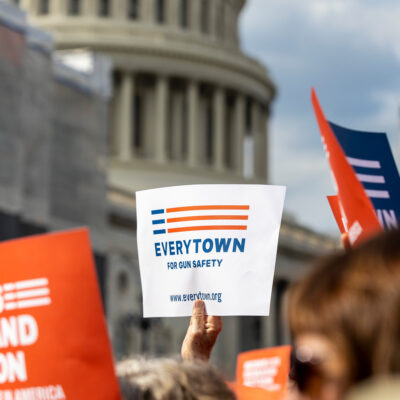Fatal Police Shooting of 21-Year-Old Pregnant Black Woman, Ta’Kiya Young, Once Again Highlights Need to Take Action on Gun Violence By Police
9.1.2023
Today, Ohio authorities released official bodycam footage showing 21-year-old Ta’Kiya Young being shot and killed by Ohio police officers on August 24. In the video, Young, who was pregnant, is heard asking police officers “are you going to shoot me.” The fatal shooting is a tragic reminder of the persistent problem of police gun violence and the need to take action to prevent these outcomes, including strengthening and implementing policies to reduce police violence.
“Ta’Kiya Young’s murder was avoidable, and utterly unacceptable,” said Angela Ferrell-Zabala, executive director of Moms Demand Action. “Police violence is gun violence – plain and simple. Addressing our gun violence epidemic means creating a reality where Black women and girls can exist without the constant threat of getting shot by the police. That starts with critically reexamining police use of force, and how we hold law enforcement accountable so that tragedies like this never happen to another family again.”
In an average year, police fatally shoot 29 people in Ohio, and across the country, police shoot and kill over 1,000 people annually. Black people are victims of police gun violence at a disproportionate rate, and Black people are nearly three times more likely to be shot and killed by law enforcement than their white counterparts. According to Mapping Police Violence, in Ohio, Black people are over four times as likely to be killed by police as white people.
Police violence is gun violence, and in order to prevent future tragedies, it is essential that law enforcement agencies adopt meaningful use of force policies, which encourage de-escalation, utilize early intervention systems, and ensure that abusive officers can be held accountable.
Research suggests that implementing specific use-of-force policies can save lives. One 2016 study of 91 large police departments found adoption of use-of-force reform policies—exhaustion of other means prior to shooting, bans on chokeholds and strangleholds, use-of-force continuum, de-escalation, duty to intervene, restrictions on shootings at moving vehicles, and warning before shooting—was associated with fewer people killed by police.




